Moose and deer are members of the Cervidae family, so they have a lot in common. In fact, from a scientific standpoint, moose are the largest member of the deer family. Both creatures are quadrupedal herbivorous ruminants. They can even share the same brownish color of fur depending on the species.
Yet, many differences exist between these creatures, and we’re going to examine them in some detail. Come along as we show you the differences between the moose vs deer. You’ll know precisely how these creatures are unique by the end of this article!
Comparing a Moose and a Deer
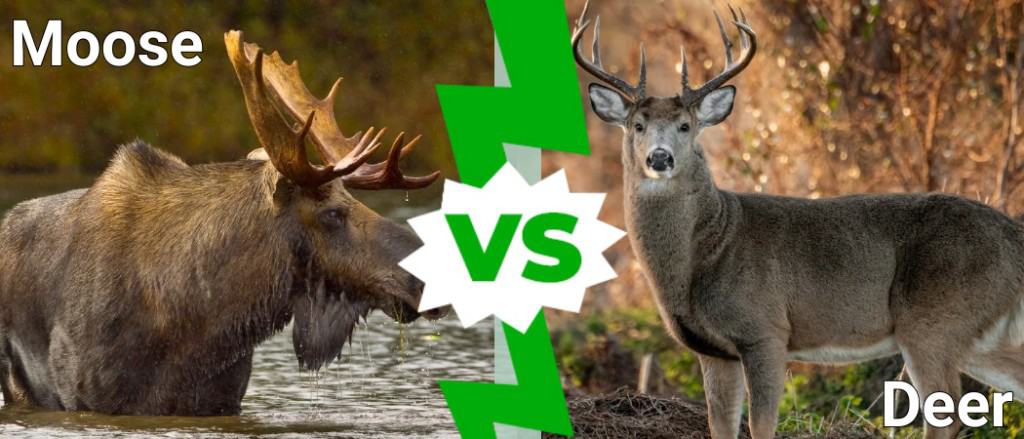
| Moose | Deer | |
| Size | Weight: 600lbs-1,500lbs Height: 4.6ft-6.9ft at shoulder | Weight: 22lbs-900lbs Height: 2ft-4ft at shoulder |
| Range | Far northern reaches of North America, Europe, and Eurasia | North America, Eurasia, Europe, Asia |
| Speed | 30-35 mph | 40 mph |
| Antlers | –Massive, elaborate antlers that demonstrate social rank -Broad, flat antlers that grow horizontally and then upwards | – Spindly antlers that grow straight up |
| Morphology | Long snout and dewlap below | Shorter, thinner snout with no dewlap |
| Social Behavior | Solitary creatures unless its mating season | Herd creatures throughout their lives |
The 6 Key Differences Between a Moose vs Deer
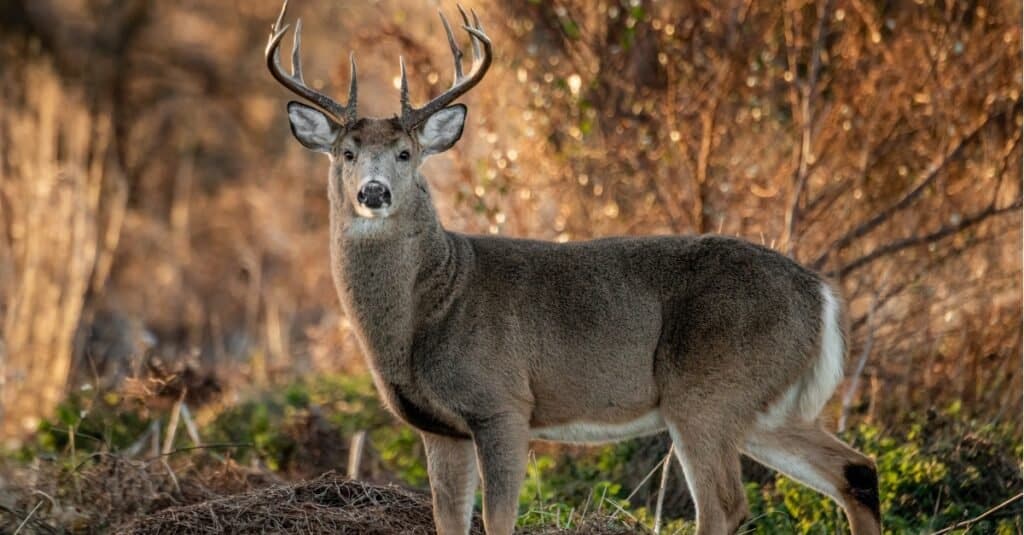
Deer live in a greater number of places than moose
©iStock.com/Harry Collins
The key differences between a moose and a deer include their size, range, and morphology. Moose are much larger than deer, and they can weigh several hundred pounds more than them and stand twice as tall.
The range of the deer is larger than the moose, and it includes areas like North America, Eurasia, Europe, and Asia, both in the northern and southern sections of each landmass. These animals are very widespread compared to moose that only live in the northern parts of North America, Europe, and Eurasia.
Moose have longer snouts than deer and possess a dewlap, a piece of fatty skin that hangs under the jaws. These are just a few of the many morphological differences between these creatures.
Moose vs Deer: Size
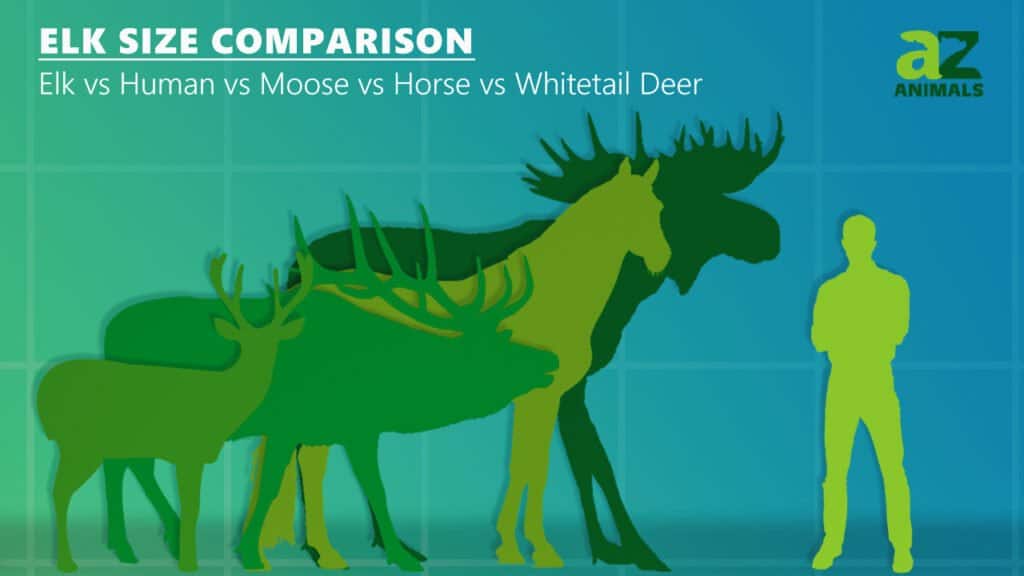
Moose are much larger than deer. A moose can stand over 6 feet tall at the shoulder, and a deer can stand about 4ft tall at the shoulder depending on the species. In fact, moose are the tallest mammals in all of North America. Also, moose weigh a lot more than deer.
Moose can weigh between 600 and 1,500lbs with the species regularly weighing over 1,000lbs when they are fully grown. Deer don’t weigh as much, but the largest species can weigh about 900lbs when they are fully grown.
Moose vs Deer: Range
The range of a deer is larger than the range of a moose. Moose primarily live in the far northern areas of the world including North America, Europe, and Eurasia. They tend to live in forested areas where they can blend in with their surroundings, find food, stay warm, and avoid predators.
The range of deer is much larger and includes the full lands of North America, Europe, Eurasia, and Asia. These animals are among the most common mammals in these parts of the world. Deer can inhabit a variety of habitats, but they have a preference for wooded areas, places with tall grass in which to hide their young, and open fields where they can congregate with herds in the winter.
Moose vs Deer: Speed
Deer are faster than moose, and they can run through forests at a speed of 40mph or slightly more depending on their species. Although moose are so much larger than deer, one might expect them to be much slower as a result. Yet, that is not the case.
Moose can run at speeds of between 30 and 35 mph. Moose have long, powerful legs that allow them to keep running through shallow water, chest-deep snow, or uneven ground. The average deer might be faster than a moose, but the latter still has an impressive speed of its own.
Moose vs Deer: Antlers
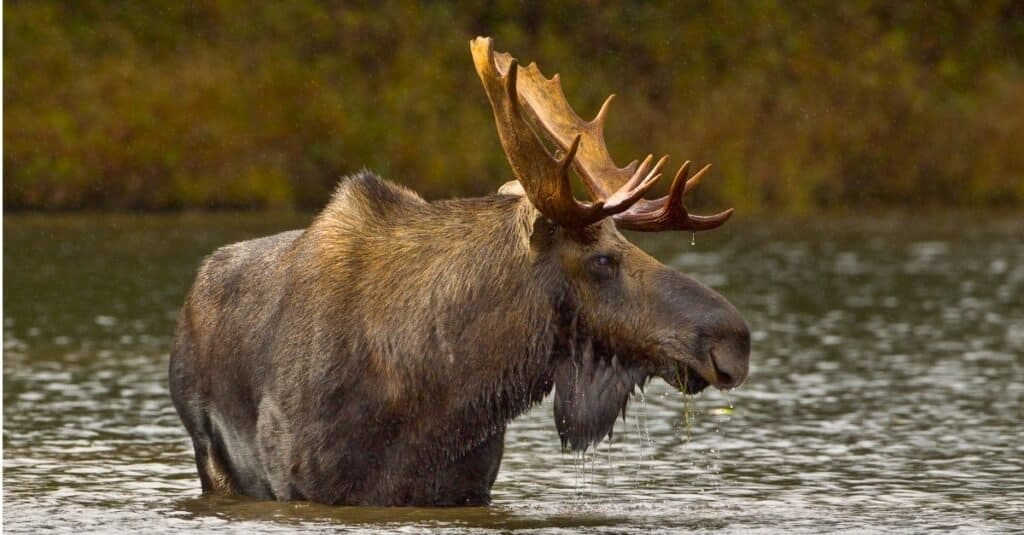
Moose antlers are large and flat
©iStock.com/RichardSeeley
Moose have much larger and more impressive racks of antlers than the average deer. Deer antlers are large and spindly, and they have many points to them. Also, their antlers start by growing straight out of their heads and continue to rise as they grow. Eventually, they’re large enough to be used for combat.
Yet, moose antlers grow horizontally at first and then upwards, creating a broad yet flat set of antlers that are used to knock over enemies. The differences in the antlers of these animals are profound.
Moose vs Deer: Morphology
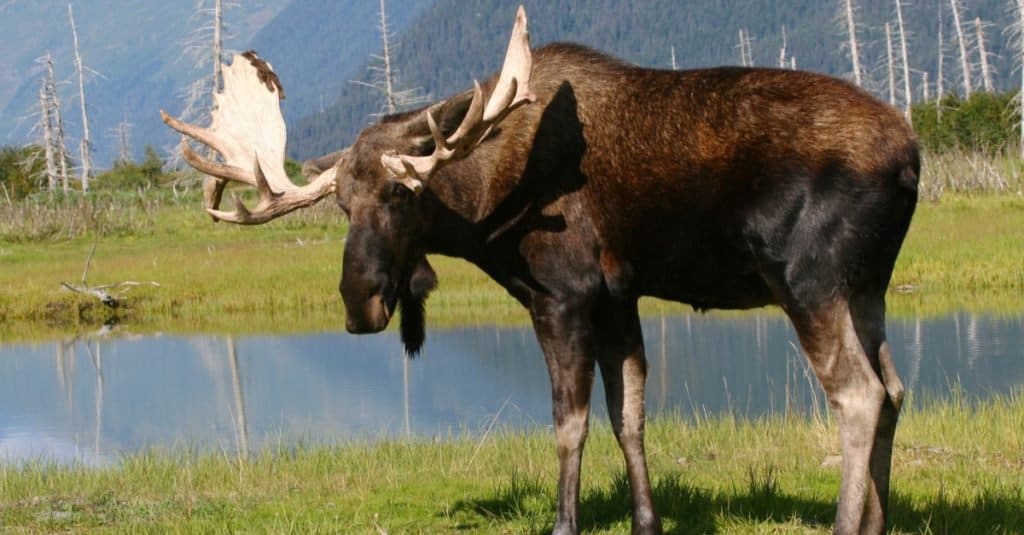
The bit of skin hanging under the moose’s jaw is a dewlap
©Steve Bower/Shutterstock.com
Moose and deer have significant differences in their morphology. Aside from their unique antlers, the moose is known for having a much larger head relative to its body that includes a long, broad snout. Below that snout is a piece of fatty skin that is called a dewlap. The dewlap can measure several inches to over a foot in length! This unique piece of their body is sometimes called a moose bell.
Deer have much smaller, thinner snouts, and they lack a dewlap on their chins. Seeing these two animals next to one another, it would be easy to distinguish the species based on these two differences alone.
Moose vs Deer: Social Behavior

Most deer live in small herds
©iStock.com/JMrocek
Deer are social animals that live in small herds for protection. Moose are solitary animals that rarely seek the company of others unless it is during the mating season. Deer will usually live with a small herd throughout much of the year, but they can combine their herds into large groups of several dozen members during the winter. However, moose will survive on their own, but they can form a small herd with one male and several females when they wish to breed.
Moose and deer are members of the same family of animals, but the latter can come in many shapes and sizes. Deer are swifter and smaller than moose, and they have a much larger range of areas in which they live. Moose have very distinctive features including their snouts, dewlaps, and antlers in the case of bucks.
Knowing the size differences between these animals and their morphological differences, anyone should have a simple time identifying these creatures should they encounter one. However, we should add that another big difference between these mammals is temperament. Moose are much more territorial and aggressive than deer, so it’s best to give moose, and most wild animals, respect and distance.
The photo featured at the top of this post is © Michael Liggett/Shutterstock.com
Thank you for reading! Have some feedback for us? Contact the AZ Animals editorial team.






